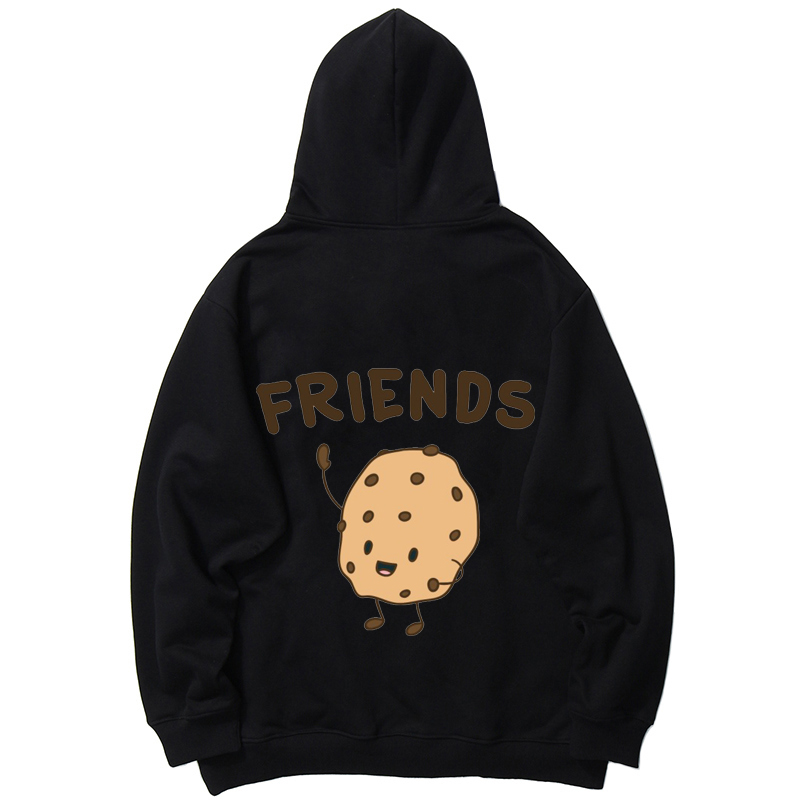
Cookie hoodies have gained popularity for their unique blend of comfort and style, embodying the appeal of everyone’s favorite treat. To bring these delightful garments to life, careful consideration is given to the materials used in their construction. This essay explores the various materials commonly utilized to make cookie hoodies, highlighting their qualities, benefits, and contributions to the overall comfort and aesthetic appeal of these fashionable garments.
Cotton:
Cotton is one of the most common materials used in the production of cookie hoodies. Known for its softness and breathability, cotton provides comfort and allows for easy movement. The natural fibers of cotton make it an excellent choice, especially for those with sensitive skin or allergies.
Cotton cookie hoodies are lightweight and provide a cozy, comfortable fit. The fabric’s breathability ensures proper airflow, preventing excessive sweating and allowing wearers to maintain a comfortable body temperature. Cotton is also highly absorbent, making it ideal for absorbing moisture and keeping the wearer dry.
Polyester:
Polyester is another prevalent material in the construction of cookie hoodies. This synthetic fabric offers several advantages, including durability, wrinkle resistance, and color retention. Polyester fibers are known for their strength and resilience, ensuring the longevity of the garment.
Polyester cookie hoodies are often chosen for their ability to hold vibrant colors and prints, allowing for intricate and eye-catching cookie-inspired designs. Additionally, polyester is moisture-wicking, meaning it draws moisture away from the body, keeping wearers dry and comfortable during physical activities or in warmer climates.
Cotton-Polyester Blend:
A popular choice for cookie hoodies is a blend of cotton and polyester. Combining the qualities of both materials, a cotton-polyester blend offers the best of both worlds. This blend provides the softness and breathability of cotton while incorporating the durability and color retention of polyester.
The cotton-polyester blend cookie hoodies provide enhanced comfort and versatility. The cotton fibers ensure a gentle feel against the skin, while the polyester fibers offer added strength and resistance to stretching or shrinking. Additionally, the blend allows for the easy care and maintenance of the garment, as it is less prone to wrinkling and fading.
Fleece:
Fleece is a popular material choice for cookie hoodies, particularly in colder climates. Made from synthetic fibers, fleece is known for its exceptional insulation properties and soft texture. Fleece cookie hoodies provide warmth, making them suitable for chilly weather or cozy indoor environments.
Fleece is lightweight, breathable, and quick-drying, making it an excellent choice for outdoor activities. It is also highly insulating, trapping body heat and keeping the wearer comfortable in cooler temperatures. The softness of fleece provides a luxurious feel against the skin, enhancing the overall comfort of the hoodie.
Fabric Blends:
In addition to the aforementioned materials, cookie hoodies can also be made from fabric blends that incorporate other fibers such as rayon, spandex, or elastane. These blends often aim to add stretch and flexibility to the garment, providing a better fit and increased ease of movement.
These fabric blends are particularly beneficial for individuals who lead active lifestyles or engage in physical activities. The addition of spandex or elastane allows the hoodie to stretch and recover, ensuring a snug yet comfortable fit.
Conclusion:
The materials used to make cookie hoodies play a crucial role in determining their overall comfort, durability, and aesthetic appeal. Cotton, polyester, cotton-polyester blends, and fleece are the commonly chosen fabrics, each offering unique qualities that contribute to the comfort and functionality of the hoodie.
Cotton provides softness and breathability, making it ideal for everyday wear. Polyester offers durability and color retention, ensuring the longevity and vibrancy of the garment. Cotton-polyester blends combine the benefits of both materials, providing comfort, durability, and easy care. Fleece adds insulation and warmth, making it suitable for colder climates.
Understanding the qualities and benefits of different materials helps individuals choose a cookie hoodie that aligns with their preferences and needs. Whether it’s for casual wear, outdoor activities, or simply indulging in the stylish comfort of a cookie-inspired garment, the materials used in cookie hoodies ensure a cozy and fashionable experience.